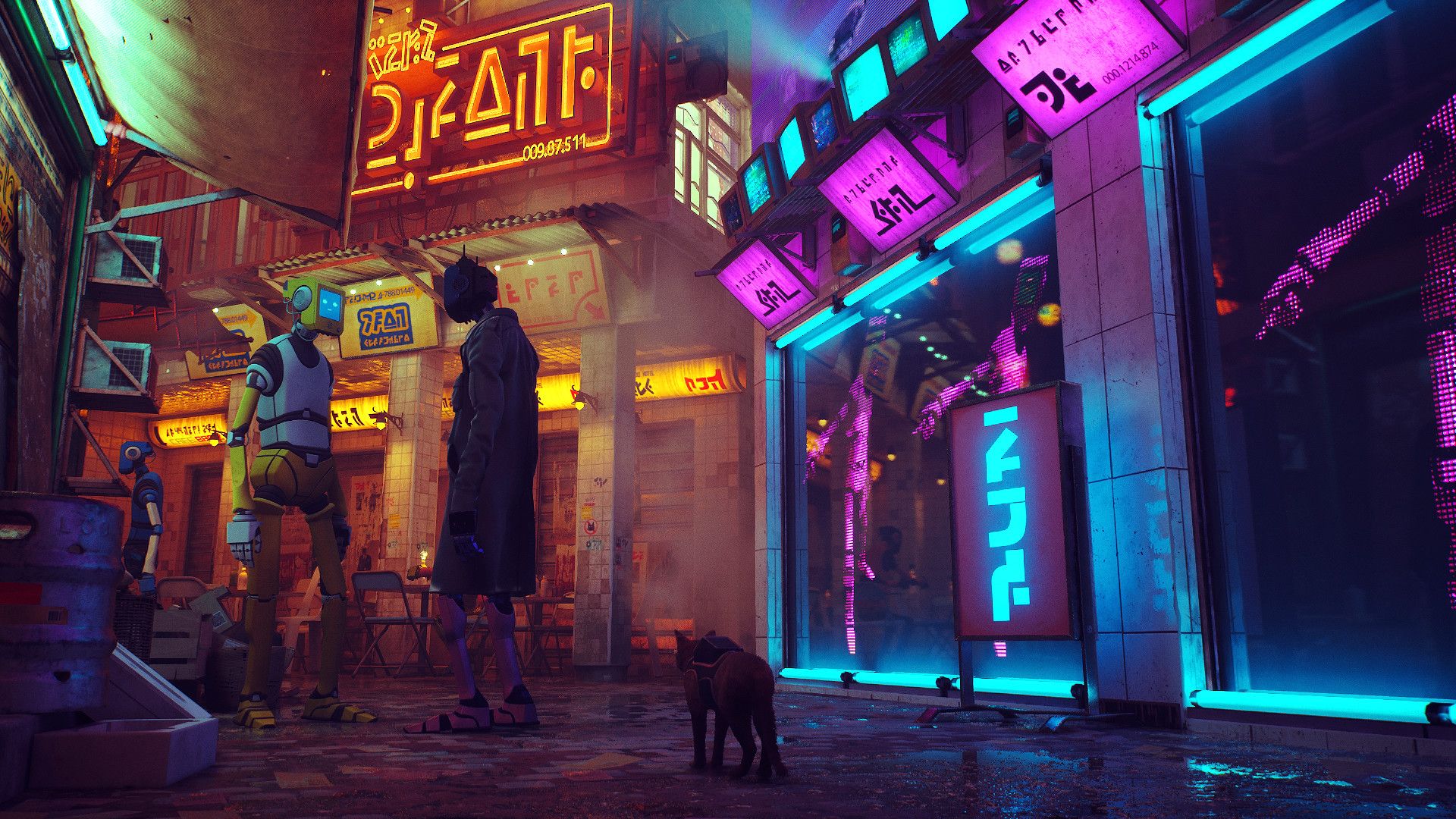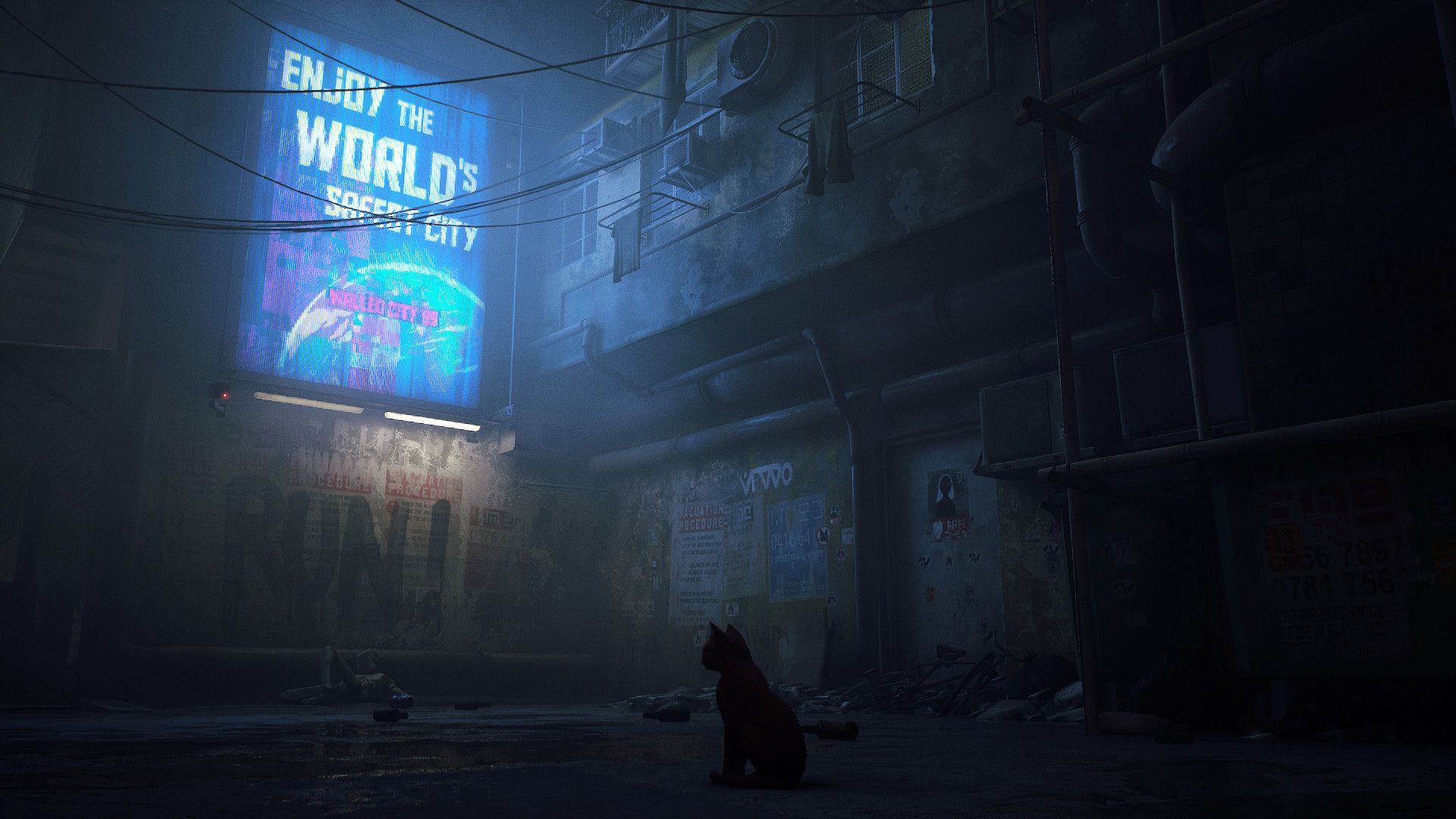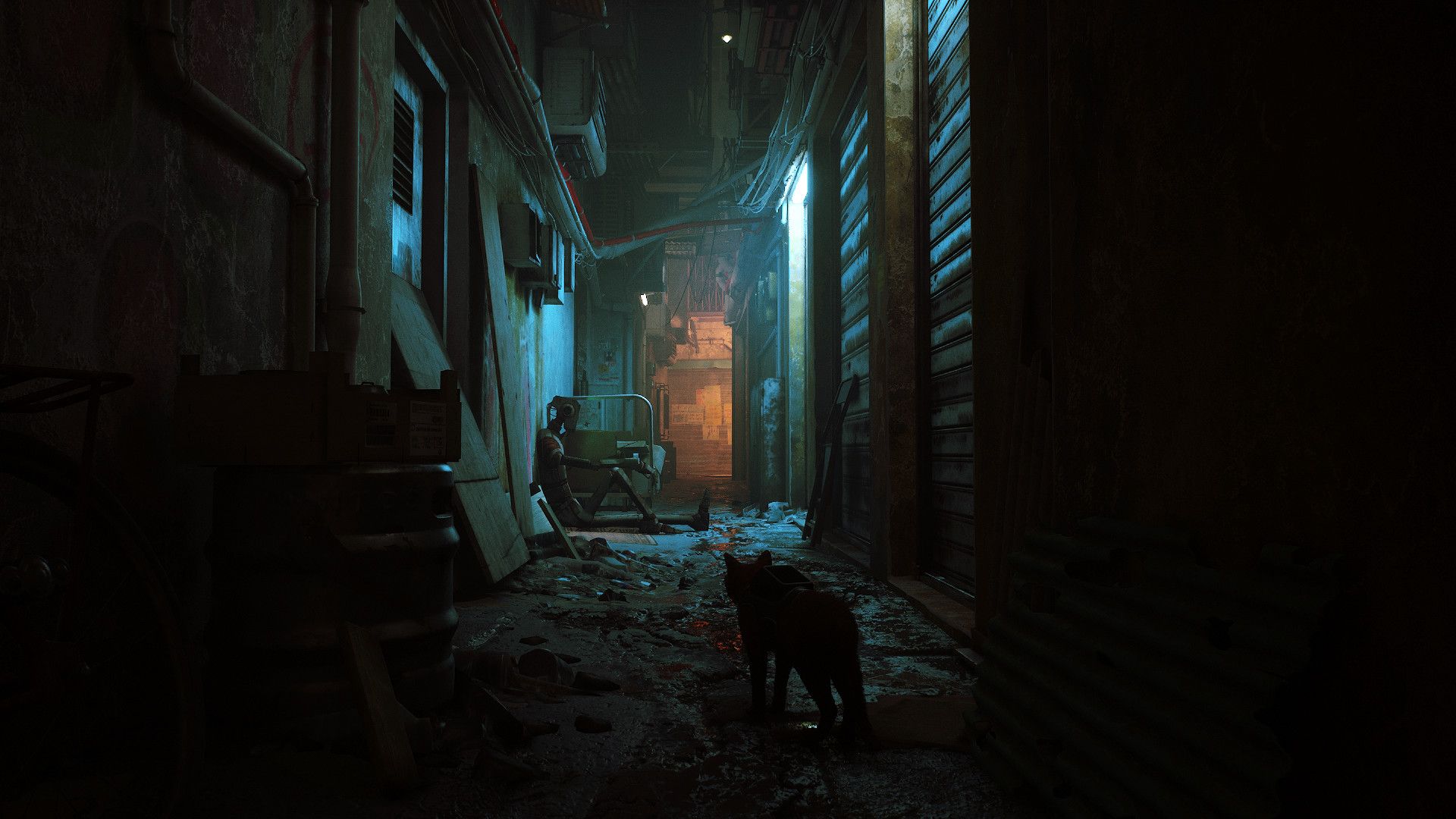Stray is amazing. I’m only an hour or so into BlueTwelve’s feline adventure and I’m already engrossed by its rich dystopian world, inventive mechanics, and the most accurate depiction of a cat ever seen in video games. This cat cats like no cat has ever catted in the medium before. They’re a good little dude eager to scratch up carpets and nap wherever they like.
This game has captured the imagination of so many across the internet, combining a love for furry friends with an experience that doesn’t put violence at the forefront. Let’s be honest, most modern blockbusters involve murder and destruction, with narratives driven by bloodthirsty quests for revenge or gameplay that sees us traverse open worlds doing battle with whomever crosses our path. It’s par for the course, and while there’s nothing inherently wrong with how games and other media approach violence, it sure is getting tiresome.
Stray is one of the biggest games in recent memory to combat that expectation. You’re a cat, and not one capable of defending itself against the obstacles it stumbles across. Often your only recourse is to run away, clambering atop obstacles or hammering a button to keep alien creatures and oppressive spotlights off your tail. It doesn’t have a sword or a gun, only its cute little legs that can carry it wherever the world dictates. This is so refreshing, and it’s easy to see why a community has fostered around Stray because of how fundamentally it subverts what we’ve come to expect from the medium. We need more games like this too.
It doesn’t stray (wahey) away from the threat of violence though, with this post-apocalyptic landscape clearly hiding several sinister secrets, with specific moments happy to put our pawtagonist (double wahey) in harm’s way to conjure up dramatic stakes. But we are never the ones inflicting harm, nor are we even capable of such things. The player is made to fear whenever a foreign body stumbles upon our character, doing everything they can to flee in search of shelter, so the possibility of dying never once crosses our mind. It’s wonderful, showcasing how games don’t need to have us destroying the places in which we reside.
Stray is a game fuelled by curiosity, a natural character trait of cats that it leans into on a near-constant basis. From the opening chapter, we are asked to play with our fellow felines. We lick them clean and have playful scraps, all before settling down to sleep before our journey begins. Much like in reality we see them stick together until fate tears them apart, with our cat falling into the underground city below and almost dying upon impact.
He recovers and we are encouraged to keep moving forward. While the game is largely linear and the majority of platforming and puzzles can only be completed in a very specific way, you are still allowed to leap atop precarious rooftops and thin fences that lead nowhere. This is exactly what a cat would do, scoping out its surroundings and making sure the places it explores are not only safe, but aren’t hiding any secrets they can keep for themselves. I did this so much, hoping to stumble across something special, but almost felt happier that I didn’t. BlueTwelve took the time to make every facet of its world a natural playground for the player, allowing them to scratch up carpets and clamber atop rooftops for a nap whenever the situation calls for it. I even had him sleep while I did some housework and browsed my phone for a little bit, earning a hidden trophy for my troubles. Now I’m thinking like a cat.
How everyone in Stray responds to you is rather magical too, and reinforces the passivity that cats naturally exude. The robotic humanoids initially flee in fear, but when it’s clear you aren’t here to eat them alive they chill out and fall in love with the adorable kitty cat. You can rub up against their shins as hearts flutter across their monitor screens, or take impromptu naps on their chests and watch as they're too anxious to move in fear of waking you. Even walking past random characters has them react whether or not you start up a conversation, eyes drawn to a majestic creature making this land its own through its existence alone.
Exploring a world without being expected to destroy it is something far few games choose to embrace. Many are keen to have us engage in violence or some other activity in fear of us growing bored, with a lack of dramatic urgency meaning we’ll move onto something else. Stray allows us to stew in the mundane, to knock over paint cans in the dead of night or pilfer through scantily occupied bars as we crawl upon unsuspecting patrons before sneaking into the neon-drenched apartments above. Memories and conversations become our sole focus as the game never urges us to move forward at anything other than our own pace. Few games move away from glorified violence, but even fewer let us take our time.
Combat becomes an afterthought, and something this game doesn’t need to exist or stand out above its contemporaries. I think that’s a big reason behind its popularity, and how it brings to life such a universally loved creature in a way games have never really broached upon before. At least not in ways that offer us such unparalleled control. We know how cats behave, and how they can be absolute assholes who are fully aware of their own behaviour. Stray never hesitates to lean into that perception and it shines as a consequence, showing that even in fictional environments where humanity has long been forgotten, our love for animals remains a universal constant that will never waver.
I play fewer games nowadays, but still remain invested in the medium as a critic exploring all manner of popular culture, and Stray stands out as one of the most distinct games in a very long time. Indie titles have long been exploring how dramatic narratives and imaginative world building can exist without the lingering presence of violence, but this experience is one that brings it to the mainstream and shows that games are capable of so much more. That, or we all just really, really, really, really love this cat. It’s probably both.
Source: Read Full Article



